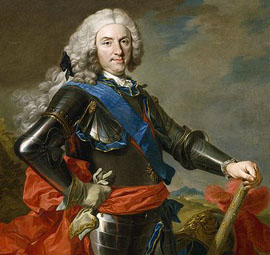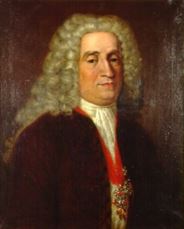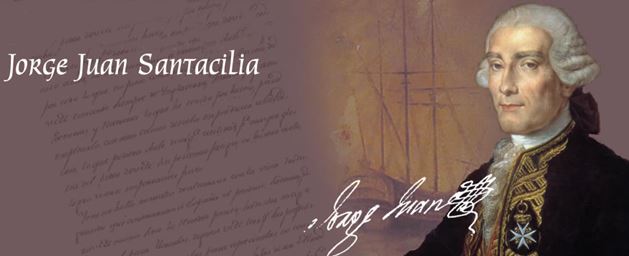Further Information
History

After the War of Spanish Succession (1701 – 1714), the new King Philip V was perfectly aware that the protection of the overseas colonies was of paramount importance for Spain in general, and the Royal Treasury in particular, given the huge amount of commercial transactions and the vital shipping routes involved.
In order to protect the colonies and the traffic to and from the Metropolis, a strong Navy was necessary. To this end, a very ambitious naval shipbuilding program started.

But a Navy was not just an assortment of vessels; also needed were capable, skillful and talented people to man and command those ships. Until the 18th century there was not a specialized training center for naval officers. Ships’ commanders came from the Pilots School in Seville and the Galley’s Cadets School in Cartagena.
To solve this important shortcoming, José Patiño founded the Midshipmen Academy in Cádiz in 1717 merging two teaching methods: the French model more theoretical, and the British model which favored a more practical approach. In those days, future midshipmen were required to be of noble descent. Some of the requirements to join the Academy were to know the basic four numeracy rules and to be over 18, although this last requirement was overlooked more often than not. Those who were not members of the nobility, but had ample navigation expertise, had also the chance of joining the navy as adventurers. This entry requirement was abolished in 1824 and the prerequisite of noble descent ten years later.

The syllabus included theoretical courses in the Academy itself, and practical classes in designated warships. The subjects were: Geometry, Algebra, Arithmetic rules, Trigonometry, Cosmography, Nautical subjects, Ordnance, Fortifications, Weaponry, Naval shipbuilding, Maneuvers, Fencing, Music and Dance.
In 1751, Jorge Juan was appointed Captain of the Midshipmen’s Company and sponsored the construction of the Royal Observatory. In 1769 the Academy moved to the Isle of Leon.
In 1776 two branch academies were established in Ferrol and Cartagena but were closed down in 1824 as they were deemed too expensive and superfluous.
In 1844 a new so-called Military Naval School of San Carlos was built in La Carraca. To join the Navy a series of requirements had to be met, namely: a ‘cleanliness of blood’ certificate and another of good health, and an age range between 11 and 17. Furthermore, the candidates had to pass a basic exam on mathematics, grammar, religious knowledge, geography, history, drawing, French and English.

In 1867 the Military Naval School of San Carlos was definitively closed down and two years later the Minister of the Navy, Juan Bautista Topete, ordered the School to be moved from La Carraca to Galicia in the north of Spain not to a new building, but to a floating site: the pontoon frigate ‘Asturias’ moored in the port of Ferrol. Its first director was Captain Sánchez Barcáiztegui.

This floating Academy was operational until 1907. In 1913 the Academy moved once again to San Fernando and in 1928 the current training ship ‘Juan Sebastián de Elcano’ was delivered to the Spanish Navy. Finally in 1938, during the Spanish Civil war, the Academy moved to Marín and the building, as it exists today, was inaugurated in August 1943.




 + 4
+ 4